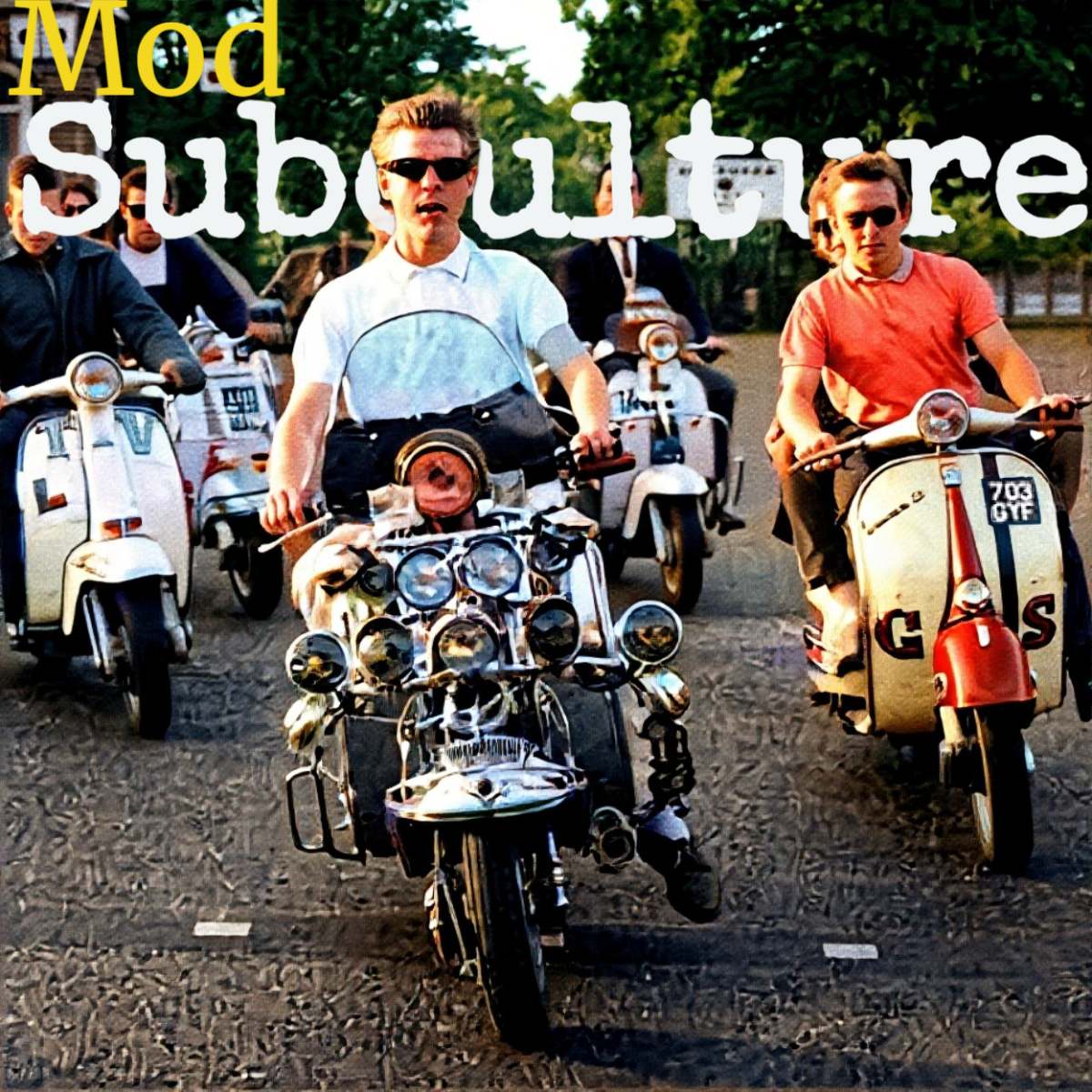- Posted on
- • History
Mod Subculture & Scooter Customisation: From 1960s London to Today
- Author
-
-

- User
- Torque
- Posts by this author
- Posts by this author
-

Mod Subculture & Scooter Customisation
From mirror-ball London to skinhead back-streets—how suits, soul, and polished chrome created the world’s sharpest scooters
1. Where It All Started – Late-50s London
Post-war teens had a bit of cash for the first time. Instead of giving wages to mum, they bought sharp clothes and 45-rpm records. They danced to modern jazz in Soho cellars and needed wheels after the last Tube ran. Cars were dear, buses stopped early, so the answer was a Vespa or Lambretta: cheap to buy on hire-purchase, easy to park, and—crucially—clean-lined against the oily British bikes of the day.
2. Why Mods Fell For Italian Scooters
The Italian scooter wasn't just transport; it was a statement that perfectly aligned with the mod ethos.
- Shape – Curved steel panels looked modern next to a dad’s Raleigh bicycle.
- Weather Shield – The full leg-shield kept tailor-made suits spotless on the way to dances.
- Blank Canvas – Flat sides begged for paint, badges, and lashings of chrome.
Riding one said, “I’m stylish, fussy, and a bit flash”—exactly the mod calling card.
3. The First Custom Jobs (1961-64)
Mods raided accessory catalogues to create their signature look:
- 4-inch chrome mirrors screwed on until the headset looked like a disco ball.
- Crash bars polished weekly with Solvol Autosol.
- Aerial whip aerials that did nothing but sparkle.
- Twin horns for a two-tone beep outside clubs like the Marquee.
Paint stayed tasteful: two-tone pastels, thin white pin-stripe, maybe the owner’s name in small gold script on the leg-shield. The aim was elegant, not loud.
4. Wheels Meet Wardrobes
Outfit and scooter had to match perfectly.
- Suit – mohair, narrow lapels, ticket pocket.
- Shoes – loafers kept in a carrier strapped to the glove-box so road salt never touched them.
- Parka – US Army fishtail, roomy enough to ride over the suit, long enough to save the trousers from oil splatter.
When 15 scooters lined up outside a ballroom, the chrome reflected mohair and checkerboard dance-floor lights—a moving fashion show.
5. Hard Mods & The Birth of Skinhead Scooters (1966-68)
Some working-class lads wanted speed, not sparkle. They kept the scooter but ditched the frills. Mirrors vanished, aerials came off, and paint went single-colour, often black or British racing green. They cut the rear frame short, removed the big tail-light, and fitted a tiny Lucas lamp—a “skelly” (skeleton) scooter. The bike was now lighter, cheaper to fix, and looked tough outside football grounds. These hard mods soon shaved their heads, tucked jeans into steel-toe boots, and became the first wave of skinheads. Their scooters said, “Function over fashion”, yet still carried the mod DNA under the bare metal.
6. Music That Moved The Machines
The soundtrack was as important as the scooter itself.
- Soul & Ska – first-gen mods revved to imported Motown and Prince Buster.
- R&B & The Who – Marshall amps and scooters both polished nightly.
- 2-Tone Ska – late-70s revival brought checkerboard decals and black-over-white paint jobs.
A scooter rally without a sound-track is just traffic; with “Green Onions” or “Ghost Town” blasting from a tinny under-seat speaker, it becomes a moving club.
7. The Mod Revival (1979-85) and Scooters Again
When The Jam hit the charts, teenagers raided jumble sales for parkas and bought any crusty Vespa they could find. Dealers woke up: “ unrestored 1965 Li150, £450” ads filled music papers. Custom mirrors came back, now with 12-volt car spotlights and Piaa fog lamps for the ride to Brighton Beach. Clubs like Secret Affair and Purple Hearts printed rally plaques that riders slapped on leg-shields like medals.
8. Skinhead Revival & The Cut-Down Look
By 1988, ska-punk bands such as The Hotknives and Bad Manners pulled a new wave of skinheads. They copied the 1968 skelly: loop tail, solo seat, no mirrors, single Cibié headlight. Engines stayed standard—reliability mattered more than revs when you rode 200 miles to an all-nighter.
9. Modern Custodians (2025)
The modern mod still begins with a £2,000 rusty heap and a YouTube video. Chrome costs a lot, so most riders spray the bike satin black and stick on one neat row of mirrors—more a quick hello than a full wave. Old lenses hide LED bulbs, and tiny Bluetooth speakers slip under the seat—sixties looks, twenties tech. Skinhead builders keep the bare-metal skelly, but weld in hidden LED strips for legal daytime running lights.
10. How To Build Your Own Mod or Skinhead Scooter Today
Whether you lean towards the flash of the mod or the function of the skinhead, here's how to capture the authentic style.
Mod Style
- Find any Vespa or Lambretta frame (even a rusty PX is fine).
- Straighten panels, fill dents with lead filler for smooth curves.
- Spray two-tone: pastel base, white roof, 3 mm pin-stripe by hand.
- Stack four to six mirrors—mix round and oval for random charm.
- Add luggage rack and white-wall tyres; keep chrome shiny every Sunday.
Skinhead Skelly Style
- Cut rear frame 10 cm behind the shock top, loop with 25 mm tube.
- Fit solo seat pan, delete pillion pegs.
- Paint single dark colour or leave raw metal with clear coat.
- Mount one small headlight, one tail-light, zero mirrors.
- Tune carb for reliability, not speed—get to the gig, not the hospital.
11. The Message Never Changed
Suit or jeans, the scooter is your badge. Shiny or plain, mirrors or none, it says you love music, friends, and looking neat on two small wheels. Keep the chrome clean, the tank full of oil mix, and the road will still whisper: “Here come the mods.”
